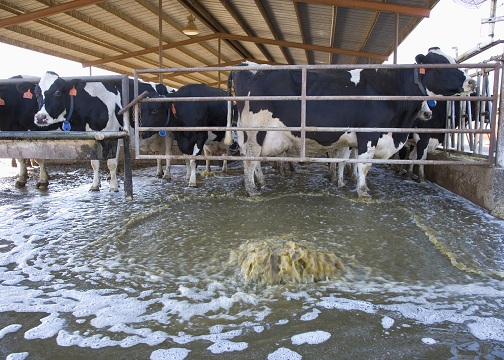Competency Area 7: Non-point source pollution AEM
PO 70. Distinguish between agricultural and non-agricultural NPS pollution and Point Source pollution and the extent and importance of each.
Point source pollution is the pollution of surface or groundwater supplies at well defined locations.
Agricultural point sources of pollution would include:
- Nutrients, Pathogens, and BOD losses from barnyards, lagoons, and other livestock facility storage and processing operations (silage leachate and bunker runoff, milkhouse wastewater discharges)
- Nutrient and pesticide losses from fertilizer and pesticide storage and rinsing areas
- Petrochemical losses from fuel storage areas and machine shop facilities
- Nutrient and BOD losses from food processing facilities
Non-agricultural point sources of pollution would be nutrient and BOD discharges from wastewater treatment plants and a variety of volatile and organic and inorganic chemicals from commercial operations and industrial manufacturing and processing facilities.
The most important point sources of pollution from agriculture occur with livestock operations, and barnyard and feeding area runoff would be the most widespread source. However, silage leachate represents a more concentrated pollutant source, although by volume it's not as much. Industrial chemicals from manufacturing are the most widespread and serious point source(s) of pollution, and many are found in groundwater.

Cleaning a dairy barn involves flushing the alleyway with water, which must then be treated and controlled properly.
Photo courtesy of NRCS
http://photogallery.nrcs.usda.gov

Improper disposal of dead chickens is a pollutant source
Photo courtesy of NRCS
Quick Links
- Competency Area 1: Basic soil properties
- Competency Area 2: Soil hydrology AEM
- Competency Area 3: Drainage and irrigation AEM
- Competency Area 4: Soil health and compaction
- Competency Area 5: Soil conservation AEM
- Competency Area 6: Watershed hydrology AEM
- Competency Area 7: Non-point source pollution AEM
- Competency Area 8: Concentrated source pollution AEM
- Competency Area 9: Conservation planning AEM
